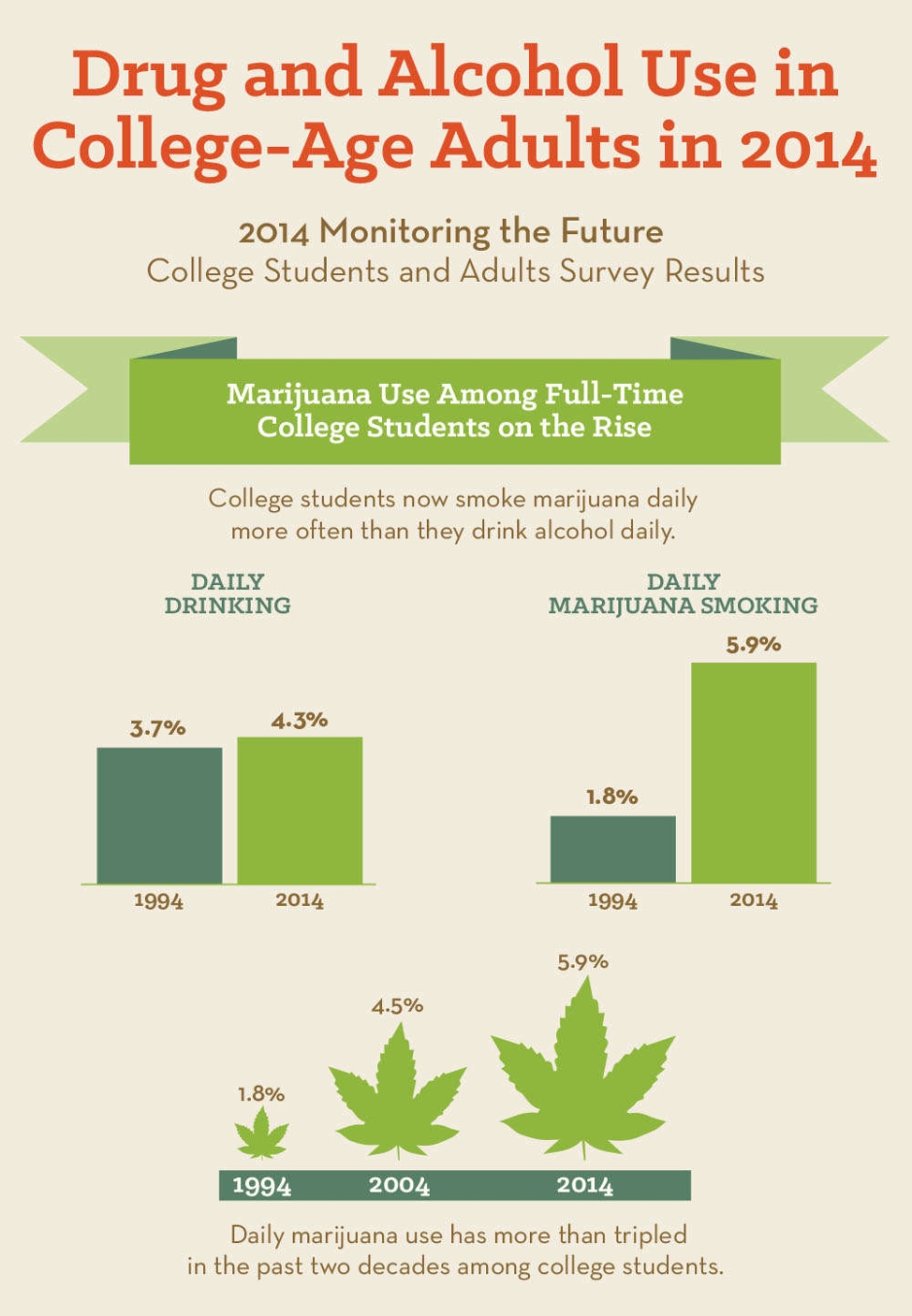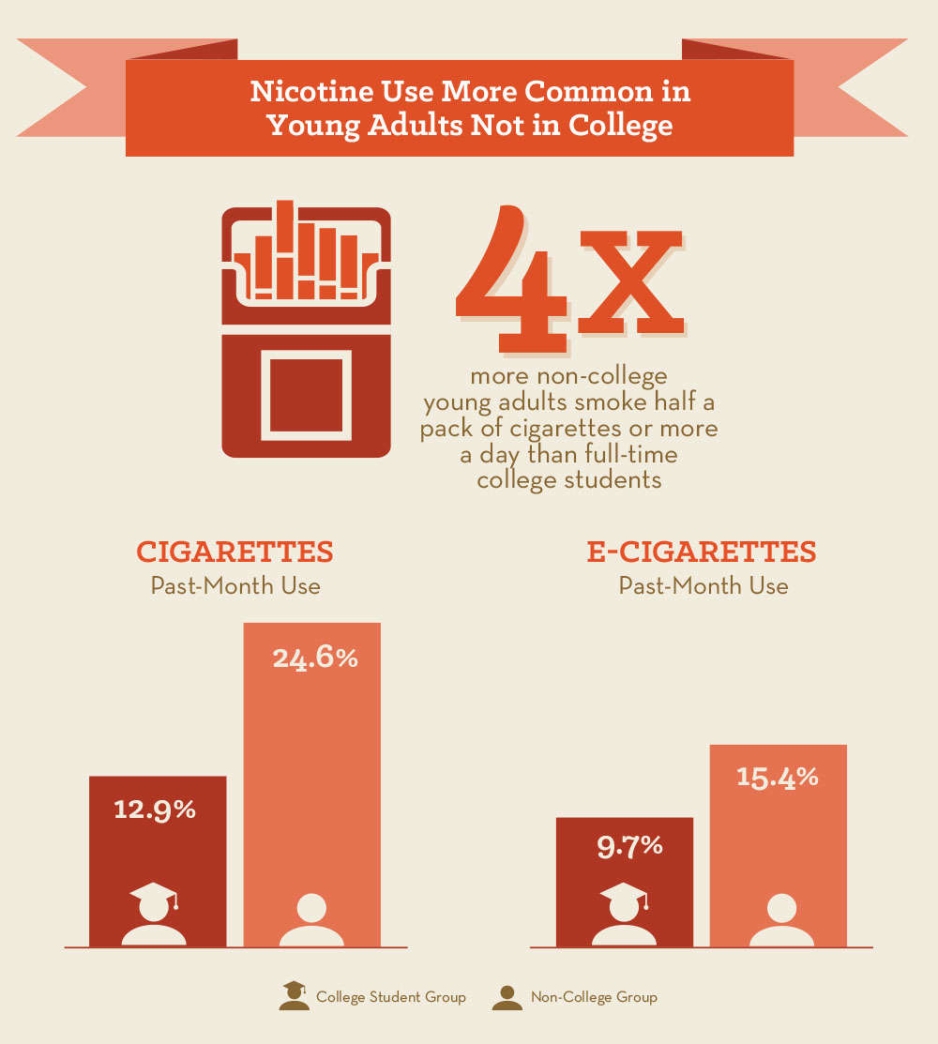The 2014 Monitoring the Future College Students and Adults survey shows trends in alcohol, marijuana, nicotine, and stimulant use in college students and non-college peers.
Text Description of Infographic
2014 Monitoring the Future College Students and Adults Survey Results
First Figure: Marijuana Use Among Full-Time College Students on the Rise
College students now smoke marijuana daily more often than they drink alcohol daily
Daily drinking: 3.7 percent in 1994 and 4.3 percent in 2014
Daily marijuana smoking: 1.8 percent 1994 and 5.9 percent in 2014.
Daily marijuana use has more than tripled in the past two decades among college students with 1.8 percent smoking marijuana daily in 1994, 4.5 percent in 2004, and 5.9 percent in 2014
Second Figure: Heavy Alcohol Use Higher in College Students than Non-College Peers
Binge drinking (five or more drinks in a row): 35.4 percent of college students and 29.3 percent of non-college peers in the past 2 weeks.
Intoxication (having been drunk): 42.6 percent of college students and 34.1 percent of non-college peers in the past month.
Third Figure: Nicotine Use More Common in Young Adults Not in College
Four times more non-college young adults smoke half a pack of cigarettes or more daily than full-time college students.
Cigarettes (past-month use): 12.9 percent of college students and 24.6 percent of non-college peers
E-cigarettes (past-month use): 9.7 percent of college students and 15.4 percent of non-college peers
Fourth Figure: Stimulant Use in Full-Time College Students: Adderall Decreasing but Cocaine Increasing
Past-year Adderall use: 10.7 percent in 2013 and 9.6 percent in 2014
Past-year cocaine use: 2.7 percent in 2013 and 4.4 percent in 2014
References:
This publication is available for your use and may be reproduced in its entirety without permission from NIDA. Citation of the source is appreciated, using the following language: Source: National Institute on Drug Abuse; National Institutes of Health; U.S. Department of Health and Human Services.




